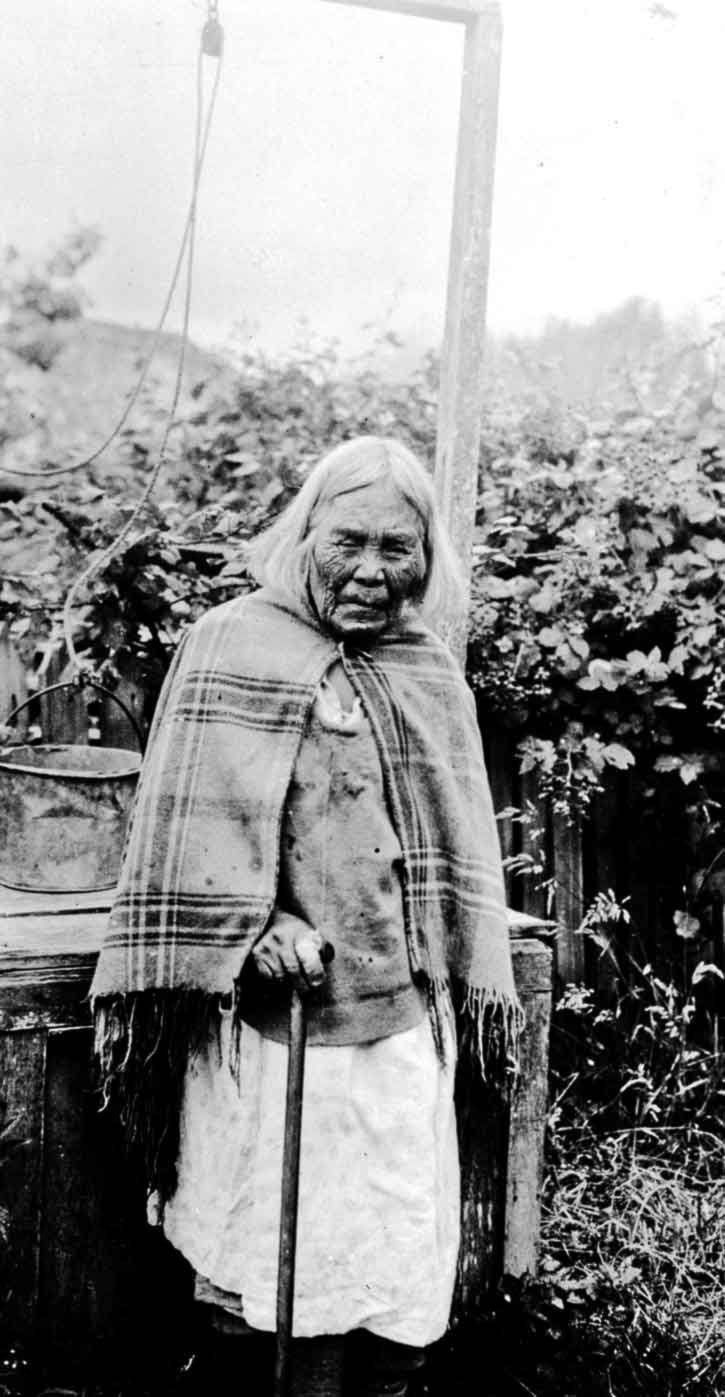Before English was ever heard here, the Saanich Peninsula’s first inhabitants spoke SENĆOŦEN (pronounced sen-chaw-sen).
As UVic’s Lorna Williams explains, the language developed organically over thousands of years, and holds a very intimate and very tangible, connection to these lands.
“We believe that all our [First Nations] languages emerged from the land. It is the land speaking.” The sounds expressed in SENĆOŦEN “come from the wind, from the water, from the trees, plants and from our ancestors,” she said. Many have no equivalent in English.
Before Europeans’ contact at the end of the 18th century, SENĆOŦEN, which means “Saanich talk,” was spread by trade and intermarriage across the Georgia Strait to Tsawwassen, the Olympic Peninsula, and the nearby Gulf Islands. On the Peninsula it was the dominant language, with perhaps 7,000 speakers here in 1852.
The arrival of the Europeans had a profound impact upon these SENĆOŦEN speakers. Newly introduced European diseases dramatically reduced the population while the introduction of residential schools forced Saanich children to unlearn their language.
This was an experience common to First Nations across Canada: Williams, herself a Lillooet speaker, recalls being subjected to severe and painful punishments for daring to speak her native tongue.
By the end of the 20th century many First Nations languages had been brought to the brink of extinction, or had been forgotten altogether. UNESCO identifies 87 critically endangered languages in Canada, more in B.C. than any other province.
SENĆOŦEN is among them. There were perhaps eight elders on the Peninsula a decade ago who could speak the language fluently and they worked doggedly to keep it alive.
SENĆOŦEN, however, is being pulled back from the brink. For the first time in memory, many Saanich indigenous youth are learning it.
“When we have our gatherings I sit and I listen to these 20-, 30-year-olds giving lengthy speeches in their language. There’s a real sense among these young people that they are not going to let their language die,” Williams said.
The seeds of this renaissance were sown in the 1970s when Dave Elliot created a SENĆOŦEN writing system (composed entirely of capital letters with the exception of a lower case s). Today his son, John Elliot, continues his work with the First Voices project.
First Voices has created a number of online language teaching tools, including a smartphone app at that allows SENĆOŦEN youth to send text messages in their own native tongue.
Elliot believes bringing his language into the “modern age” has ensured its survival on the Peninsula in the 21st century.
“My son said to me, ‘Now that I have to text in SENĆOŦEN, I have to think in it, and it really feels alive now.’”
These efforts are bolstered by 22 students currently studying to become SENĆOŦEN teachers who will help pass their knowledge on to future generations.
Elliot sees a bright future for SENĆOŦEN.
“We can go as big as our dreams go, and I dream big, so I want to have our own radio station and our TV station. It can be done.
“For the longest time it felt like we were talking about a dead language and it doesn’t seem dead anymore,” he added.
The tribal elders are certainly breathing a sigh of relief, but as Williams explained, this has significance for all of us.
“Our languages are part of the history of these lands. Every settler that has come to these lands needs to know this is part of their heritage, too.”
